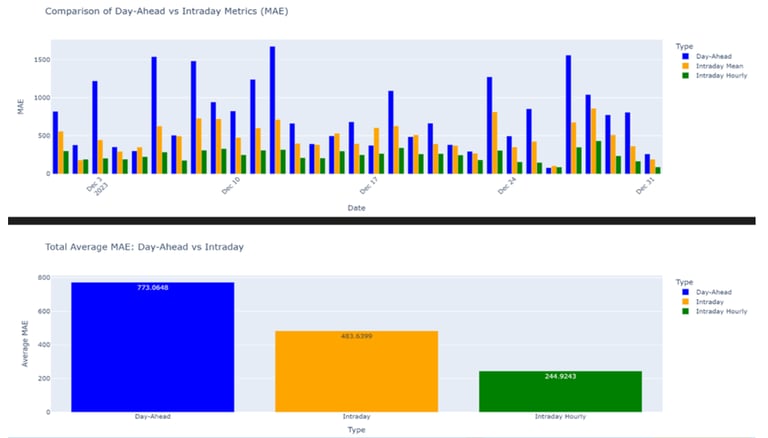Figure 2. Comparison of day-ahead vs intraday based vs intraday hourly on Mean Absolute Error. The first bar plot indicates the result of 30 days, while the second bar plot indicates the total average of Mae across these 30 days. (Taken from the report)
Moreover, in the case of EV-Public Low Power Charger dataset, the report revealed a surprising insight: while a model specifically designed to capture long-term daily and weekly patterns performed better in a day-ahead forecasting, in the case of a generic model the intraday approach resulted on reducing error up to 70%. This confirms that the chosen model is as important as the forecasting horizon.
Furthermore, findings for business offices and municipality center datasets also provide interesting insights: In the case of business offices, intraday forecasting had a big impact on correcting the errors presented in the day-ahead predictions. While in the case of Municipality Center, due to its irregular patterns, fluctuations and inconsistencies across years benefit the least from intraday forecasting. In the report, it is suggested to not implement intraday forecasts for data with high levels of noise and poor quality.
Conclusion
The report ends by affirming that while intraday forecasting is a powerful tool for improving prediction accuracy, the way it is implemented has to be strategic as the benefits change depending on the model used as dataset. In this case, it is then more beneficial for profiles with strong short-term predictability, while the ones with highly stable long-term patterns of irregular and inconsistent data, it is not.
If you would like to learn more about the report you can contact us via email.



